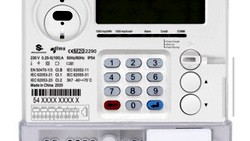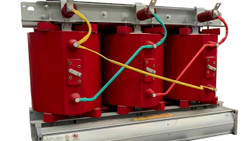In the world of electricity distribution, it's important to keep things running smoothly. However, even minor localized faults can have far-reaching consequences, potentially triggering widespread blackouts through a domino effect across interconnected transmission networks. In this article, we explore the complex challenges posed by cascading outages and explore the strategies utilities employ to prevent them. From real-time awareness through outage management systems to under-frequency load shedding and protective relaying, we uncover the multifaceted precautions that help maintain grid stability and resilience. Join us as we navigate through the intricacies of mitigating the domino effect and safeguarding the reliability of our electricity networks.
When a Single Fault Causes Chaos: The Hypothetical Tree Branch Scenario
It's a stormy night where gusts of wind howl through the trees, and rain pelts down relentlessly. In the midst of this tempest, a seemingly insignificant event occurs—a large tree branch snaps under the force of the wind and crashes onto a transmission line. At first glance, it appears to be just a localized fault, but little do we know the chaos that will ensue.
As the branch makes contact with the transmission line, it causes a momentary disruption in the flow of electricity. Sensors along the line detect this fault and trigger protective relays, isolating the affected section. However, the story doesn't end there.
The sudden loss of power in that particular area puts an increased load on nearby transformers, which were already operating near their capacity. Overwhelmed by the surge, these transformers succumb to the strain, failing one after the other like a series of falling dominoes. With each transformer failure, a pocket of darkness expands, impacting homes, businesses, and critical infrastructure.
But the domino effect doesn't stop there. The sudden loss of power in these areas places an excessive burden on other transmission lines and substations, exceeding their carrying capacity. Overloaded and struggling to cope, they too succumb to the stress, triggering a cascade of failures that races across the interconnected grid.
Within a matter of minutes, what started as a seemingly minor fault has transformed into a full-blown catastrophe—a widespread blackout affecting entire regions. The domino effect of cascading outages has wreaked havoc on the electricity distribution system, leaving countless people without power and disrupting essential services.
This hypothetical scenario vividly demonstrates the real-world consequences of an unchecked domino effect in cascading outages. It highlights the critical importance of implementing strategies to prevent such chain reactions and maintain grid stability.

The domino effect of cascading failures in electricity distribution systems.
Let's break the chain and keep the power flowing.
Mitigating Cascading Failures
Utilities are well aware of the devastating consequences that can arise from cascading failures in electricity distribution systems. To minimize the risk of such catastrophic events, utilities employ a range of techniques and precautions.
- Real-Time Awareness Through Outage Management Systems
Outage management systems (OMS) provide utilities with real-time awareness of the state of their electricity distribution networks. These systems continuously monitor the grid, detecting faults and abnormalities that could potentially trigger cascading failures. By quickly isolating trouble spots, operators can prevent secondary impacts from emerging and mitigate the spread of outages. The ability to identify and respond to potential trouble spots in real-time is crucial in preventing the domino effect. - Strategic Under-Frequency Load Shedding
Under-frequency load shedding is an automated mechanism designed to protect grid stability in the event of overload conditions that could potentially lead to cascading failures. When the frequency of the grid drops below a certain threshold, strategically selected sections of the grid are deliberately disconnected, creating rolling blackouts. By shedding load in a controlled manner, utilities can prevent the overload from propagating through the system and causing widespread disruptions. This proactive approach helps maintain grid stability and prevents the domino effect from taking hold. - Protective Relaying
Protective relaying plays a crucial role in preventing cascading failures by rapidly detecting faults and initiating targeted tripping of specific protection zones. When a fault occurs, protective relays quickly identify the affected section of the grid and isolate it from the rest of the system. This targeted tripping prevents the fault from spreading and triggering overly broad shutdowns, known as sympathetic tripping.
Sympathetic tripping refers to the unintentional tripping or shutting off of circuit breakers or relays during a fault condition elsewhere in an electrical transmission or distribution system. It occurs when faults or disturbances in one part of the grid unintentionally trigger safety devices in other areas. Sympathetic tripping can unintentionally cause wider spread outages affecting more customers than just the original fault location. It poses reliability issues and challenges in restoring power efficiently.
Coordinating protective relay settings between interlinked grid components is important to avoid over-tripping during disturbances. Modern grids implement technologies like microprocessor-based relays, fiber-optic communications and synchrophasor data to more accurately isolate faults while preventing sympathetic tripping reactions from cascading outages. Coordinated protection schemes are critical for resilience. - Dynamic Line Ratings
Dynamic line ratings help postpone overloads by factoring in real-time weather impacts. Traditionally, transmission lines have been operated based on conservative static ratings. However, dynamic line ratings take into account variables such as temperature, wind speed, and solar radiation to more accurately assess the capacity of the lines. By leveraging dynamic line ratings, utilities can better manage the load on transmission lines, reducing the likelihood of overloads that could trigger cascading failures. - Advanced Modelling and Simulations
Utilities utilize advanced modelling and simulations to simulate "what if" scenarios and support decision-making during emergencies. By running computational network replicas (digital twins) and conducting drills on these virtual replicas, operators can practice and refine their response strategies for limiting the propagation of faults before they occur in the live field. This proactive approach allows operators to gain valuable insights and make informed decisions to prevent cascading failures.
Takeaway
While it may be challenging to foresee and prevent all cascading failures, utilities' multifaceted precautions significantly diminish the risk of chain reactions. By utilizing outage management systems, implementing strategic under-frequency load shedding, employing protective relaying, incorporating dynamic line ratings, and leveraging advanced modelling and simulations, utilities strive to maintain grid stability and resilience.
As grids become increasingly reliant on smart sensors and control schemes, operators continue to learn from past incidents, further fortifying their systems against the disruptive dynamics of the domino effect. Resilience demands an unwavering vigilance against even the slightest disturbances.
If you have any inquiries or need further information about how CLOU can support the prevention of cascading failures in electricity distribution systems, please do not hesitate to reach out to us. We are here to assist you and welcome your valuable thoughts and comments.
Until then, keep your power flowing smoothly like a well-coordinated symphony of electrons!
Editor's note: This article was originally published in November 2023 and has been updated for comprehensiveness.





All comments are moderated before being published. Inappropriate or off-topic comments may not be approved.